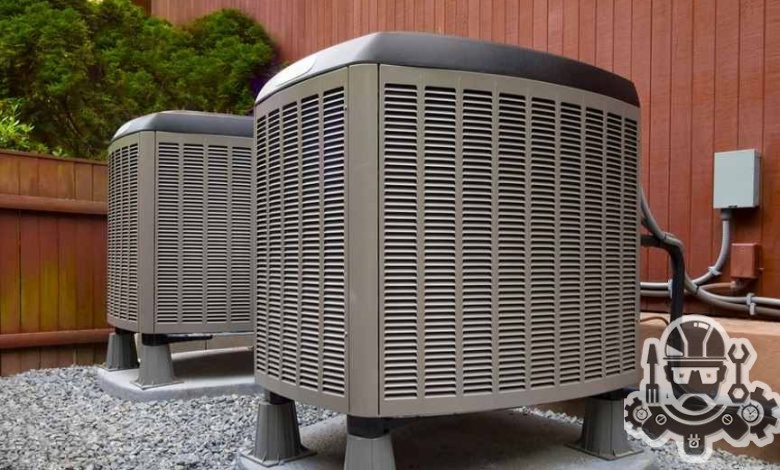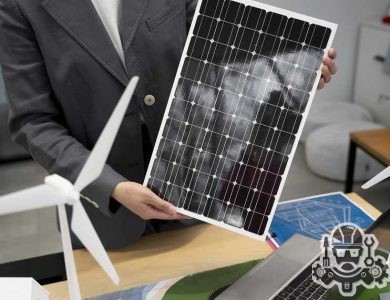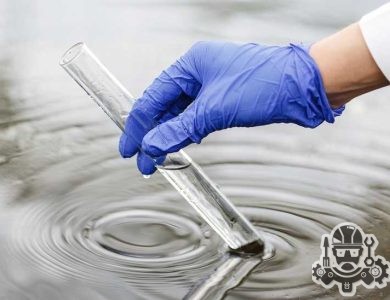Everything You Need to Know About Heat-Pump Efficiency

Introduction To Heat-Pump Technology
Are you in need of an energy-efficient heating and cooling system for your home or business? Look no further than heat-pump technology.
Heat-pump technology works by extracting heat from the air, ground, or water and transferring it to your desired location. This process is extremely efficient, as it doesn’t rely on the burning of fossil fuels to create heat. Instead, it simply moves existing heat from one place to another.
There are three main types of heat-pumps: air-source, ground-source, and water-source. Air-source heat-pumps are the most common and work by utilizing heat from the air outside of your home or business. Ground-source and water-source heat-pumps utilize heat from the ground or water respectively.
| Types of Heat-Pumps | Pros | Cons |
|---|---|---|
| Air-Source | Easy installation, cost-effective | Can struggle in extremely cold temperatures |
| Ground-Source | Highly efficient, consistent performance | Expensive upfront cost |
| Water-Source | Efficient, can be used year-round | Requires nearby body of water |
The benefits of using a heat-pump system go beyond just energy efficiency. They also provide consistent heating and cooling, improved air quality, and increased comfort levels. Before installing a heat-pump, consider factors such as the climate in your area, the size and layout of your space, and the availability of energy-saving rebates.
It’s important to maintain your heat-pump system by cleaning air filters regularly and scheduling annual check-ups with a professional technician. Common issues with heat-pumps include inadequate heating or cooling, strange noises coming from the unit, and refrigerant leaks.
While heat-pump technology is more expensive upfront than traditional heating and cooling systems, the long-term savings in energy costs make it a worthwhile investment. The future of heat-pump technology looks bright, with advancements in technology leading to even greater efficiency and cost-effectiveness.
Contents
- 1 How Does A Heat-Pump Work?
- 2 Types Of Heat-Pumps: Air-Source, Ground-Source, And Water-Source
- 3 Benefits Of Using A Heat-Pump System
- 4 Energy Efficiency Of Heat-Pumps
- 5 Factors To Consider Before Installing A Heat-Pump
- 6 Maintaining Your Heat-Pump: Tips And Tricks
- 7 Heat-Pump Vs. Traditional Heating And Cooling Systems
- 8 Common Issues With Heat-Pumps And How To Fix Them
- 9 Future Of Heat-Pump Technology: Innovations And Advancements.
How Does A Heat-Pump Work?

A heat pump is an innovative technology that delivers comfort to homes and offices all over the world. Rather than creating heat or cold, it moves heat from one space to another, providing a more energy-efficient way to cool and heat a space. A heat pump consists of an indoor unit, an outdoor unit, a compressor, and refrigerant. The outdoor unit absorbs heat from the air or ground, then transfers it indoor. The indoor unit then release the heat to keep the room warm. But how does all this work exactly? Let’s break it down.
First, the refrigerant in the outdoor unit absorbs heat from the air or ground outside. This same refrigerant, in the form of a vapor, moves to the indoor unit where it is compressed by a compressor. When a gas is compressed, its temperature increases. The now compressed refrigerant leaves the compressor as a hot, high-pressure gas and moves to the indoor coil. Here, the hot gas releases its heat as it cools and condenses back into a liquid.
Next, the liquid refrigerant flows through a metering device that controls its flow before it enters the outdoor coil. As the refrigerant flows through the outdoor coil, it absorbs heat from the outside air or ground and evaporates back into a gas. This cold, low pressure gas now moves back to the compressor to begin the cycle again.
| Part | Description |
|---|---|
| Indoor Unit | This is the unit that releases the heat indoors |
| Outdoor Unit | This is the unit that absorbs heat from the outside air or ground |
| Compressor | This compresses the refrigerant |
| Refrigerant | This is the fluid that is responsible for heat transfer |
So that’s how a heat pump works. It’s a simple but efficient process that delivers warmth to your space. By utilizing renewable sources of energy, heat pumps save on energy costs and reduce carbon emissions, making them an environmentally-friendly option for heating and cooling.
Types Of Heat-Pumps: Air-Source, Ground-Source, And Water-Source
Heat pumps are an efficient way to heat and cool your home. They work by transferring heat from one place to another. There are three main types of heat pumps: air-source, ground-source, and water-source. Each type has its own advantages and disadvantages, and choosing the right one for your home depends on a few factors.

An air-source heat pump works by extracting heat from the air outside your home and bringing it inside. It can also work in reverse, taking heat from the inside and moving it outside to cool your home. These types of heat pumps are typically the most affordable and easiest to install. However, their efficiency decreases as the temperature outside gets colder.
A ground-source heat pump, also known as a geothermal heat pump, uses the constant temperature of the earth to heat and cool your home. It works by circulating a liquid through underground pipes, where it absorbs or releases heat depending on the season. These types of heat pumps are more expensive to install, but they are highly efficient and can save you money on your energy bills over time.
| Pros | Cons |
|---|---|
| Highly efficient | Expensive to install |
| Durable and long-lasting | Requires excavation |
| Can provide hot water | May require backup systems in extreme temperatures |
A water-source heat pump uses water from a nearby lake, river, or well to provide heat for your home. Like a ground-source heat pump, it circulates a liquid through pipes to absorb or release heat. These types of heat pumps are highly efficient and can save you money on your energy bills. However, they require a nearby water source and are more expensive to install than air-source heat pumps.
| Pros | Cons |
|---|---|
| Highly efficient | Requires a nearby water source |
| Durable and long-lasting | Expensive to install |
| Can provide hot water | May require backup systems in extreme temperatures |
When deciding which type of heat pump to choose, consider your location, budget, and energy efficiency needs. An HVAC professional can help you determine which type of heat pump is right for your home.
Benefits Of Using A Heat-Pump System
A heat-pump system is an incredibly efficient and versatile way to heat and cool your home. Unlike traditional heating and cooling systems, heat pumps don’t produce heat through combustion or resistive heating. Instead, heat pumps transfer heat from one area to another, using electricity to run compressors and fans. If you’re considering a heat-pump system for your home, here are some benefits you should know:
Lower Energy Bills: Heat pumps use electricity to move heat around, rather than generating it themselves. This means that they are much more efficient than traditional heating and cooling systems. According to the Department of Energy, homeowners can expect to save between 30-50% on their energy bills when switching to a heat pump system.
Versatility: Heat pumps can be used to heat and cool your home, making them a versatile option for year-round comfort. They can also be used to heat water, so you can enjoy energy-efficient hot water as well.
| Heat-Pump Type | How it Works | Best For |
|---|---|---|
| Air-Source Heat Pump | Transfers heat between indoor air and outdoor air | Moderate climates |
| Ground-Source Heat Pump | Transfers heat between indoor air and the ground | Colder climates |
| Water-Source Heat Pump | Transfers heat between indoor air and a nearby water source | Homes with access to a nearby body of water |
Environmental Benefits: Because heat pumps use electricity rather than burning fossil fuels, they produce fewer greenhouse gas emissions than traditional heating and cooling systems. This means that using a heat pump system is a way to reduce your carbon footprint.
Improved Comfort: Heat pump systems offer consistent and even heating and cooling throughout your home, which means no more hot or cold spots. They also produce less noise than traditional HVAC systems, making your home a more comfortable and peaceful environment.
Overall, a heat-pump system is a smart investment for homeowners who want to lower their energy bills, reduce their carbon footprint, and enjoy year-round comfort. If you’re considering a heat-pump system, be sure to consult with a licensed HVAC professional to determine what type and size of system is best for your home.
Energy Efficiency Of Heat-Pumps
Heat-pumps are becoming increasingly popular among homeowners due to their energy-efficient nature. These systems work by transferring heat from one location to another, making them ideal for both heating and cooling a home. But what exactly makes heat-pumps so energy efficient? Let’s take a closer look at some of the main factors that contribute to their efficiency.

The first factor to consider is the source of the heat. Air-source, ground-source, and water-source heat-pumps all work by extracting heat from their respective sources, which requires less energy than creating heat from scratch. Additionally, heat-pumps require less electrical energy to operate compared to traditional heating and cooling systems, as they only need to move heat rather than generate it.
| Source Type | Average COP (Coefficient of Performance) |
|---|---|
| Air-Source | 2.5 – 3.5 |
| Ground-Source | 3.5 – 4.5 |
| Water-Source | 4.0 – 6.0 |
The second factor is the efficiency of the heat-pump itself. The COP, or Coefficient of Performance, is an important metric for measuring the efficiency of a heat-pump. This value represents the ratio of heat output to electrical input. A higher COP means the system is more efficient at converting electricity into heat. As shown in the table above, different types of heat-pumps have different average COPs.
Lastly, proper installation and maintenance of the heat-pump system can greatly improve energy efficiency. A poorly installed system or one that is not properly maintained may not operate at its full potential, leading to energy waste and higher costs. Regularly cleaning and replacing air filters, ensuring proper refrigerant levels, and scheduling annual maintenance checks can all help ensure optimal energy efficiency.
Overall, heat-pumps are a great option for homeowners looking for an energy-efficient alternative to traditional heating and cooling systems. By utilizing renewable sources of heat and operating at a high level of efficiency, these systems can provide both comfort and cost savings for years to come.
Factors To Consider Before Installing A Heat-Pump
A heat-pump system can be a great investment for both residential and commercial properties. It is an energy-efficient alternative to traditional heating and cooling systems that can save you a lot of money in the long run. However, before you make the decision to install one, there are a few factors to consider.
Climatic Conditions: The climate in your area can play a significant role in the performance of your heat-pump system. If you live in an area with extremely low temperatures, you may need to invest in a heat-pump system that is specifically designed to work in these conditions. Similarly, if you live in an area with high humidity, you may need to choose a system with a better dehumidifier.
Size Of Your Property: The size of your property is another important factor to consider when installing a heat-pump system. If you have a large property, you may need to invest in a system with multiple outdoor units to ensure proper heating and cooling throughout your property. Similarly, if you have a smaller property, a single indoor unit may be sufficient.
| Property Type: | System Type: |
|---|---|
| Single-family home | Air-source or ground-source heat-pump |
| Commercial property | Water-source heat-pump |
Existing HVAC System: If you already have an HVAC system in place, it’s important to consider how a heat-pump system will integrate with it. You may need to make certain modifications to ensure that the two systems work well together.
Costs: Finally, it’s important to consider the costs of installing a heat-pump system. While the initial installation costs may be higher than traditional heating and cooling systems, the long-term savings can make it a worthwhile investment. Consider your budget and energy-saving goals when making your decision.
Considering these factors before installing a heat-pump system can help you make an informed decision that will benefit your property for years to come.
Maintaining Your Heat-Pump: Tips And Tricks
Maintaining your heat-pump is crucial to ensure that it functions efficiently and lasts for a long time. Heat-pumps are an excellent heating and cooling option for homeowners, but like any other HVAC system, they require regular maintenance. Here are some tips and tricks to help you maintain your heat-pump and keep it running smoothly.
Tip #1: Change the Air Filters Regularly
The air filters in your heat-pump system play a vital role in keeping it efficient and clean. Dirty air filters can cause your system to work harder than necessary, which means that it uses more energy and shortens the lifespan of its components. Make sure you change your air filters at least once every three months or more often if you live in a dusty environment.
Tip #2: Keep the Coils Clean
The coils in your heat-pump system can become dirty over time, which affects the system’s efficiency. Dirt and debris can build up on the coils, causing them to lose their heat exchange abilities. To keep your system running smoothly, clean the coils at least once a year with a soft brush or vacuum cleaner. If you notice excessive dirt and debris on the coils, contact a professional to clean them.
| Type of Filter | Cleaning Frequency |
|---|---|
| Washable Filters | Once a Month |
| Disposable Filters | Every Three Months |
Tip #3: Monitor the Outdoor Unit
The outdoor unit of your heat-pump system is exposed to the elements, which means that it can become dirty, clogged, or damaged over time. Make sure you monitor the outdoor unit regularly and remove any debris or foliage buildup that could impact its performance. Additionally, trim any plants or bushes that could limit its airflow or cause damage to the unit’s delicate components.
Following these tips and tricks can help you maintain your heat-pump and keep it functioning efficiently for years to come. Remember, regular maintenance can save you money on energy bills, extend the life of your system, and prevent costly repairs in the future.
Heat-Pump Vs. Traditional Heating And Cooling Systems
When it comes to keeping our homes comfortable, we need to consider the type of heating and cooling system we want to use. Traditionally, most homes use a central air conditioning and heating system that relies on electricity. However, in recent years, heat-pump technology has been gaining popularity due to its energy efficiency and cost-effectiveness. In this blog post, we will explore the differences between heat-pump and traditional heating and cooling systems.
Firstly, let’s briefly explain how both types of systems work. Traditional air conditioning and heating systems use electricity to transfer heat from inside the house to the outside during cooling cycles and vice versa during heating cycles. On the other hand, heat-pump systems use refrigerant to transfer heat from the air, ground, or water source to inside the house during heating cycles and vice versa during cooling cycles. This makes heat-pump systems more energy-efficient than traditional systems, especially in regions with moderate climates.
| Traditional Systems | Heat-Pump Systems |
|---|---|
| Use electricity to transfer heat | Use refrigerant to transfer heat |
| Less energy-efficient compared to heat-pumps | More energy-efficient compared to traditional systems |
| Not suitable for extremely cold climates | Work efficiently in moderate climates |
Another difference between the two systems is the source of energy they use. Traditional systems rely on electricity, which can be expensive, especially during peak hours. On the other hand, heat-pump systems can use renewable energy sources such as geothermal energy, which is more cost-effective in the long run. Moreover, heat-pump systems can also work as dehumidifiers, which can improve the indoor air quality and reduce mold growth.
However, there are some disadvantages to using heat-pump systems. Firstly, they are more expensive to install compared to traditional systems. Additionally, they might not be suitable for extremely cold climates, as they may become less efficient and require additional energy. Finally, heat-pump systems require regular maintenance to ensure their efficiency and longevity.
In conclusion, heat-pump systems are more energy-efficient and cost-effective compared to traditional heating and cooling systems. However, they come with their own set of advantages and disadvantages, and it’s important to consider factors such as climate, energy source, and maintenance requirements before choosing the right system for your home.
Common Issues With Heat-Pumps And How To Fix Them
Heat-pumps are the best investment you can make for your home as they are energy-efficient, eco-friendly and provide both cooling and heating functions. However, like any other electrical appliance, there are issues that may arise with heat-pumps. Understanding these issues is crucial for homeowners, as it helps to identify and fix problems before they get worse and require extensive repair. In this blog post, we will discuss some of the common issues with heat-pumps and how to fix them.
Faulty Thermostat: The thermostat of a heat-pump is responsible for regulating the temperature of your home. If the thermostat is faulty, it can cause your heat-pump to operate inefficiently or not work at all. One of the common signs of a faulty thermostat is if the heat-pump is not turning on or off when it should. To fix this issue, you should first check the batteries in the thermostat. If that doesn’t work, you may need to replace the thermostat altogether.
Clogged Air Filters: Dirty air filters can cause a lot of problems with your heat-pump. When the air filter is clogged, it restricts the airflow and causes the heat-pump to work harder to maintain the desired temperature. This not only results in increased energy consumption but also can cause damage to the heating system. To avoid this issue, you should clean or replace the air filters regularly.
| Problem | Solution |
|---|---|
| Low refrigerant level | It’s essential to hire a certified HVAC technician to check and refill your refrigerant level. |
| Odd noises or smell | Check the outdoor and indoor unit for any debris like twigs, leaves and for any damage. Clean or remove the debris. |
| Frozen coils | Change your air filters regularly, and schedule HVAC services for a checkup and cleaning to avoid frozen coils. |
Low Refrigerant Level: Refrigerant is the substance that helps to transfer heat throughout the heating system of your heat-pump. If the refrigerant level is too low, the heat-pump may not generate enough heat, resulting in decreased efficiency and performance. Low refrigerant levels can occur due to leaks in the system. To solve this issue, you need to hire a certified HVAC technician to check and refill your refrigerant level.
These are a few common issues with heat-pumps and the ways to fix them. For recurrent issues or more severe problems, it is always recommended to hire a professional HVAC technician. Regular maintenance and checkups can also help prevent these problems from recurring.
Future Of Heat-Pump Technology: Innovations And Advancements.
The heating, ventilation, and air conditioning (HVAC) industry has always been in a constant state of innovation. As the world moves towards more eco-friendly and sustainable practices, it’s no surprise that the HVAC industry has also been making strides towards this direction. One of the trends in the HVAC industry that’s gaining traction is the use of heat-pump technology. With more people becoming aware of the benefits of using heat-pumps, there is a growing demand for innovations and advancements in this area. In this blog post, we’ll explore what the future of heat-pump technology looks like.
One of the areas where innovations are being made in heat-pump technology is in refrigerants. Most of the heat-pumps in the market today use refrigerants that have a high global warming potential (GWP). This means that they contribute significantly to climate change. As a result, there is an increasing need to find refrigerants that have a low GWP and are also energy-efficient. Manufacturers are now exploring new refrigerants that can be used in heat-pumps, such as hydrofluoroolefins (HFOs).
Another area where advancements are being made is in the development of smart heat-pumps. Smart heat-pumps use machine learning algorithms and artificial intelligence to learn about the user’s preferences and adapt to their needs. For instance, a smart heat-pump can adjust the temperature settings based on the user’s behavior. If a user consistently sets the temperature to a specific level at a particular time of day, the smart heat-pump will learn this behavior and adjust the temperature automatically in the future.
| Pros | Cons |
|---|---|
| – Energy-efficient – Low operating costs – Low greenhouse gas emissions – Dual use (heating and cooling) |
– Initial installation cost can be high – Works best in certain climates – Requires regular maintenance |
The use of renewable energy sources is also a significant area of focus in the future of heat-pump technology. Heat-pumps can be powered using renewable energy, such as solar and wind power, making them a more sustainable option. In some instances, heat-pumps can even be used to store excess energy produced by renewable sources, making them an essential part of the energy grid.
Finally, innovations are being made in the field of material science, with researchers exploring new materials that can be used in heat-pumps. For instance, researchers are investigating the use of new types of magnets that can be used to create more efficient heat-pumps. These advancements in material science can lead to heat-pumps that are more efficient, have a more extended lifespan, and are more environmentally friendly.
In conclusion, the future of heat-pump technology looks bright, with manufacturers and researchers investing in innovations and advancements in this area. From the use of new refrigerants to the development of smart heat-pumps and the use of renewable energy sources, there is no shortage of ideas and possibilities in the world of heat-pump technology. As the world continues to move towards a more sustainable future, heat-pumps will undoubtedly play a crucial role in this transition.
A heat pump is an innovative technology that delivers comfort to homes and offices all over the world. Rather than creating heat or cold, it moves heat from one space to another, providing a more energy-efficient way to cool and heat a space. A heat pump consists of an indoor unit, an outdoor unit, a compressor, and refrigerant. The outdoor unit absorbs heat from the air or ground, then transfers it indoor. The indoor unit then release the heat to keep the room warm.
A heat-pump system is an incredibly efficient and versatile way to heat and cool your home. Unlike traditional heating and cooling systems, heat pumps don't produce heat through combustion or resistive heating. Instead, heat pumps transfer heat from one area to another, using electricity to run compressors and fans.
Heat-pumps are becoming increasingly popular among homeowners due to their energy-efficient nature. These systems work by transferring heat from one location to another, making them ideal for both heating and cooling a home. But what exactly makes heat-pumps so energy efficient? Let's take a closer look at some of the main factors that contribute to their efficiency.
A heat-pump system can be a great investment for both residential and commercial properties. It is an energy-efficient alternative to traditional heating and cooling systems that can save you a lot of money in the long run. However, before you make the decision to install one, there are a few factors to consider.



